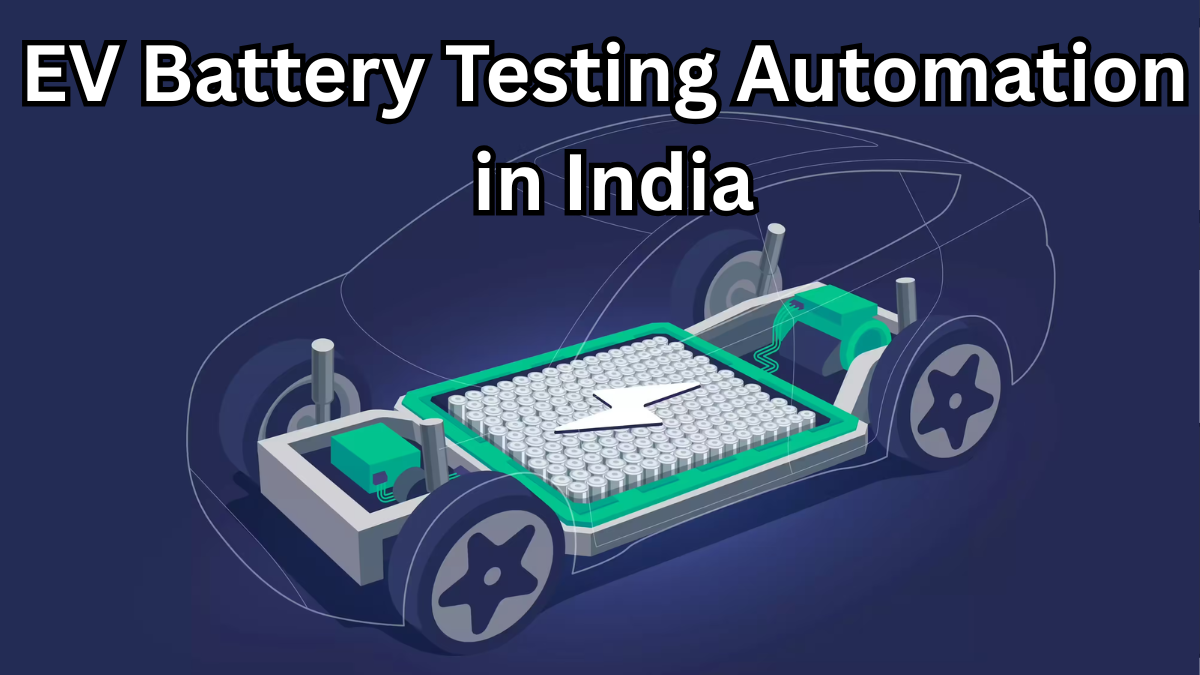In the fast-evolving world of electric mobility, India is making significant strides. One of the most critical aspects of EV manufacturing—battery testing—is now seeing a revolutionary transformation. RBR Technologies, a pioneer in industrial automation, has played a crucial role in this shift, bringing Battery Testing Automation for EV Plants to the forefront.
Here’s a closer look at how RBR’s advanced systems are redefining the future of EV production in India.

The Growing Need for Battery Testing Automation
As the number of EVs on Indian roads increases, so does the demand for safer, more efficient battery systems. Manual testing is no longer viable when you’re dealing with:
-
Thousands of battery units per day
-
Complex diagnostics involving temperature, voltage, current, and cycle life
-
Precision and repeatability in quality assurance
This is where Battery Testing Automation for EV Plants steps in. Automation not only improves speed but ensures consistency in safety, quality, and performance validation.
RBR’s Role: Driving Innovation in EV Battery Testing
RBR Technologies has designed a modular and scalable battery testing automation solution for leading Indian EV manufacturers. Their solution includes:
-
End-of-line EV diagnostics to catch performance issues before batteries are shipped
-
Custom-built robotic testing rigs with thermal imaging and voltage tracking
-
Integrated software with analytics dashboards for real-time monitoring
Key Features of RBR’s Testing Automation System
| Feature | Description |
|---|---|
| End-of-line EV diagnostics | Final stage testing to ensure battery integrity and functionality |
| Thermal Monitoring | Detects hot spots and overheating issues before they become hazardous |
| AI-Driven Data Analysis | Real-time insights for faster decision-making and predictive maintenance |
| Scalable Modular Design | Easily adaptable to different battery sizes and production line volumes |
| Zero Human Intervention | Fully automated process to eliminate manual error and improve safety |
Real Impact: Case Study Snapshot
In one of RBR’s flagship installations at a Pune-based EV plant, results were impressive:
-
45% reduction in overall battery testing time
-
99.7% accuracy in fault detection via end-of-line EV diagnostics
-
Over 12,000 battery packs tested monthly with minimal manual oversight
This transition allowed the plant to scale up without compromising on safety or quality.
How Battery Testing Automation Benefits EV Plants
Here’s why EV manufacturers are making the switch:
-
Higher throughput and reduced bottlenecks
-
Early detection of performance and safety issues
-
Compliance with BIS and global standards
-
Long-term cost savings with predictive analytics
-
Real-time diagnostics through smart dashboards
Looking Ahead: What’s Next?
India’s EV ecosystem is only getting stronger. With government incentives, green mandates, and growing consumer interest, battery testing automation is no longer optional—it’s essential.
Companies like RBR are already ahead of the curve, ensuring that Battery Testing Automation for EV Plants and end-of-line EV diagnostics remain reliable, scalable, and future-ready.
FAQs
1. Why is battery testing automation important in EV manufacturing?
Automated systems ensure faster, safer, and more accurate testing of EV batteries—crucial for mass production without compromising on quality or safety.
2. What is end-of-line EV diagnostics?
It’s the final step in battery testing where automated systems verify that each unit meets performance, safety, and efficiency standards before leaving the production line.
3. How does RBR’s system improve efficiency?
RBR’s automated rigs test thousands of batteries with AI-based fault detection, real-time dashboards, and predictive alerts, reducing time and human error significantly.
4. Is automation scalable for small EV startups?
Yes, RBR’s modular systems are scalable, making them ideal for both large-scale manufacturers and emerging startups.
Click here to learn more
